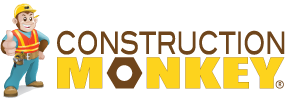In today's world of CADD, fast track projects, out sourcing, reduced design staffs, it is impossible to get through a project without at least a dozen new sets of drawings and hundreds of RFIs being issued. Gone is the day of having a complete and accurate set of drawings prior to starting a project. I remember and loved the Corps of Engineer projects because I could always get a set of documents that were 100% complete. It appears as if you can't expect on that anymore either.
Since we have all of these documents floating around out there, I wanted to take some time to review the art of Document Control. With the evolving ways that people can communicate, Document Control can take on an entire life of its own and if poorly managed can lead to expensive mistakes. You should be putting someone on every project in charge of document control and they should have a list/log of documents that your team will be building from. The list should contain at the minimum for each drawing:
Make sure that you know what you are building and have a great week!
Since we have all of these documents floating around out there, I wanted to take some time to review the art of Document Control. With the evolving ways that people can communicate, Document Control can take on an entire life of its own and if poorly managed can lead to expensive mistakes. You should be putting someone on every project in charge of document control and they should have a list/log of documents that your team will be building from. The list should contain at the minimum for each drawing:
- Sheet Name and Identifier
- Current Large Drawing Issue (For Example CCD #24 dated January 1, 2010). When I state current, I mean that it is authorized to proceed. Make sure you don't just put in the latest date, ensure that you are authorized and you will get paid for proceeding with the document.
- All minor drawing issues related to a drawing. As you are aware the consultants will often send out changes via email using 8 1/2" x 11" mark-ups. You need to keep a list of these documents as they should be posted to the latest Current Large Drawing Issue.
- All RFIs that relate to documents. Remember that RFIs can relate to multiple documents, but if you are look in at P-1, you would like to see any RFIs that relate to this document.
- Any other documents that might relate to the document. This will typically mean documents you are not authorized to proceed with. It is always good to let your field forces know what else is out there and obviously the drawings you are not authorized to proceed with today are the ones you are building with tomorrow.
Make sure that you know what you are building and have a great week!
